I’m sure that it’s no surprise to anyone that compared to men, women who are musicians must first gain widespread cultural approval for their physical appearance before they are even evaluated based on their artistic merit. This difference in media perspective represents a double standard, with males in the music industry judged first as artists and women primarily on their appearance and sexuality. Fat women, specifically, are routinely disparaged in mediums such as social media and through Internet memes, regardless of their professional achievements. Men are usually spared such ridicule in the media. Media and public criticisms of Adele, Jessica Simpson, Jennifer Hudson, Lady Gaga, Susan Boyle, and more serve to exemplify this double standard, as they have been shamed and subjected to pressure to change because of their appearance, despite phenomenal accomplishments as incredibly popular and commercially successful musicians. I’d like to point out that I am a fat woman who is also a musician, so keep in mind my perspective tempers my opinion on this subject.
So here’s a super brief history of western beauty culture, giving some background on why a woman’s appearance might be relevant to her career prospects. From “ancient” times when lighter skin reflected social status, through to the 17th, 18th and 19th centuries when beauty was understood as to be a manifestation of inner, moral qualities the narrative continues through to the beginning of the 20th Century which saw a huge boom in the business of “man-made beauty”. It became (and continues to be) a very important social marker for women to show their status, health, femininity, and desirability through their physical appearance.
In her book “Fat!So?” Marilyn Wann looks at a similar story throughout time with the history of diet products, discussing how fat and beautiful have come to be mutually exclusive to one another in popular discourse. She chronicles the burgeoning market from the end of the 19th century to now being a 60 billion dollar a year industry, all in the name of beauty, and women literally trying to fit in to an unrealistic standard. It should be noted that among the myriad of roadblocks that women face,(in general and as musicians), racism is an incredibly huge problem that contributes greatly to the same double standard I am speaking about here. Many women have come to define themselves in relation to the way men evaluate their bodies, for fat women and women of colour this is greatly magnified. This evaluation becomes especially relevant when a woman’s body becomes easily accessible for ostensibly male consumption through wide media exposure. This type of exposure is typical of the music industry.
Robin James (check out her blog) argues that Western popular music is grounded in misogyny and racism, having been built in the context of colonialism, and since women are usually in the role of singer that they rarely are able to be the “macho” guitar players or other male associated roles. Women often appear to be relegated to fulfill certain tropes when it comes to being the “singer” or otherwise, as the subject matter of many, many pop songs. In the 1980’s and 1990’s the advent of MTV and music videos pushed women’s appearance further into the spotlight. I think it’s pretty safe to say that everyone agrees that women in music are held to much higher standards than men when it comes to attractiveness and sexuality, and are more likely to be sexually objectified. It is still significantly more challenging for female artists to become “legendary” than their male counterparts pop music culture.
As seen from the feminist perspective, the role of women in the music industry is incredibly restrictive and unwelcoming. For women who do not meet the arbitrary standards of sexual attractiveness, such as disabled women, older women, and the focus of this post, fat women, it is all but impossible to forge a career in this field.
For whatever reason, the size and, ostensibly, health of fat musicians is increasingly an indication of success. If a fat woman becomes successful in popular music, they must be constantly shamed by media and the population at large to change. For example, Adele (who is one of the most highly successful musicians in the world) has countless internet detractors all dedicated to pointing out just how fat she is, as well as the commentary of several public figures remarking negatively on her size, including Joan Rivers and Karl Lagerfeld.
The most scathing internet meme of Adele shows her in a black and white, classy headshot accompanied by a quote of hers remarking on how it is more important for her to be a good musician than to be beautiful. It is compared to an unflattering photo of her bending over, with the commentary; “This is how fat people see themselves; and this is what fat people actually are: FAT!” 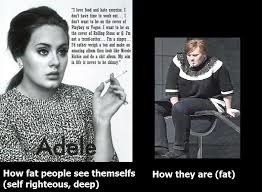
Implying that no matter her other accomplishments or attributes, the only quality about her worth remarking on is her size. This is obviously an extreme example that serves to discount Adele’s original quote, in which she attempts to put the importance of her professional accomplishments above being beautiful. The commentary of the anonymous Internet critic takes her daring proclamation and turns it on its head, saying in essence, that for women, it is in fact more important to be beautiful and thin first, and only once that is accomplished can her other attributes (like professional skill, for example) be evaluated. This single, ignorant critic does not represent the minority but rather a large and vocal part of the music industry, and society at large.
Adele is not the only woman making music who has been berated for her size. Other examples of fat women who were subject to unparalleled amounts of criticism include Mamma Cass of the Mammas and the Pappas, Kelly Osbourne, Ann Wilson from Heart, Carnie Wilson from Wilson and Phillips, and more. While the criticism and derision do not detract from their skills as performers, it is problematic for many reasons. It is symptomatic of a larger problem, where women are valued primarily for their appearance and sexual viability, rather than for their tangible contributions to society and culture. The attitude makes it more difficult for any woman that does not fit the beauty standards to pursue a career in music, and make record labels less likely to take a risk on someone who may be genuinely talented but not look like a typical pop star.
An interesting and depressing side effect of the attention paid to a female musician’s size, is that if fat musicians lose weight, they are hailed as inspirational and lauded for their efforts, continuing to highlight the fact that the “accomplishment” of their beauty is more important than their careers. An example of this includes Jennifer Hudson, who lost a significant amount of weight through Weight Watchers after she already won an Academy Award and was considered very successful. Her original commercial included her saying, “Before Weight Watchers, my whole world was no” again reinforcing the notion that women’s accomplishments are worthless if they are not also beautiful, which is what really has value. Two further examples come from the pop singer Kelly Osbourne, who lost weight and triumphantly began calling other singers fat as revenge, and Carnie Wilson, from the band Wilson and Phillips, who had two weight loss surgeries; the first of which was streamed live on the Internet. Similar examples for male musicians cannot be found, even though there are inordinately more men in the industry than there are women. This double standard is incredibly harmful. Although I should add, it would still be harmful if it also applied to men. If anyone knows any male examples please note in the comments (the trend of “bringing men down”, btw, is not a good thing for anyone, and that is not what I- or any feminists, presumably- want)
The fact that Adele, Queen Latifah, Beth Ditto and other fat women have been able to forge successful careers in pop music is a heartening step in the right direction for all women, and indeed everyone that is interested in the integrity of music. The opportunity for self publishing and utilizing the internet is also a great tool that can be used to ensure all women have equal opportunities. While the double standard of valuing women on their appearance above all else persists, it is increasingly affecting public perception more than it is commercial success, which is positive.
** if this seems like a crappy college essay, that is because it is indeed a slightly reworked version of my first ever college essay. sorry :D**

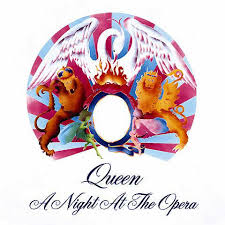
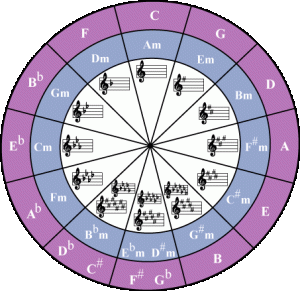



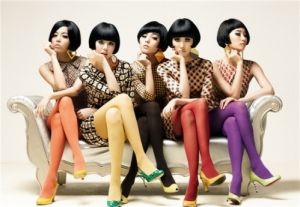

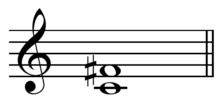

Written
on May 29, 2014